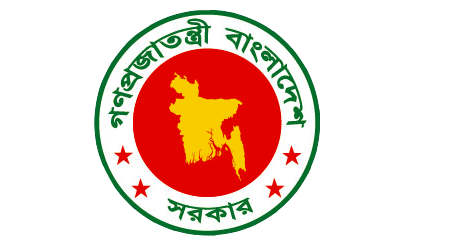The National Social Protection System (NSPS) faces a range of challenges. While a significant proportion of government expenditure is invested in social protection, its impact is below potential. The Government is committed to increasing the efficiency and effectiveness of the social protection expenditure so that the poorest and most vulnerable citizens of Bangladesh receive a minimum income guarantee, while those in danger of falling into poverty are protected.
It will take many years to reform the current SPS so that it is fit for the middle income country that Bangladesh aspires to become; it cannot be completed over the next five years. However, this chapter sets out the way forward so that, after five years of implementation of the NSPS, significant progress would have been made towards the longer-term vision.
The Strategy proposed here builds on the positive changes that have already commenced across the ongoing NSPS. The NSPS has been evolving towards a Lifecycle Approach, similar to that found in many middle and upper income countries. However, there are key gaps, such as among old age and very young children. Furthermore, no programme yet provides adequate coverage and transfer levels.
The NSPS will strengthen and consolidate this transformation towards a lifecycle system by consolidating progress in a small number of priority schemes. The aim is to make the entire system more inclusive by incorporating a higher proportion of poor and vulnerable people within it. This will be achieved by gradually increasing coverage of priority schemes and ensuring that selection processes prioritise the inclusion of poor families and those who are vulnerable to falling into poverty.
While Social Protection is a core public service it needs to complement investments in other services. Therefore, along with spending on social protection, the Government will continue to invest in other public services – such as health, education, social care, and water and sanitation – to enhance their quality and provide greater access for all citizens of Bangladesh. The commitment by the Government to introduce health insurance as a means of enabling the access of all families to health services is an example of a health sector programme that closely complements the initiatives in social protection.
The Government will also ensure that reforms to the social protection system facilitate the engagement of families in the labour market since providing families with work is the best means to reduce poverty. Traditionally, such initiatives have been referred to as “graduation” however, in this chapter they will be referred to as complementary labour market initiatives. “Graduating” families from social protection schemes when they are still poor can undermine the sustainability of investments in labour market activities.
The Government’s plans to consolidate and move forward Bangladesh’s current evolution to a lifecycle system of social protection. It will outline initiatives for addressing the needs of the citizens of Bangladesh as they move through the life course, from birth to old age. Most of the proposals outlined build on and strengthen c support the direction that the country has been taking over the past two decades. The Chapter will also set out plans to address other growing challenges and risks, such as urbanization and disasters, although the strategy focus only on initiatives that fall within the scope of the social protection sector.
It is important to note at the outset the inter-linkages of programmes and beneficiaries within the life cycle. For example, support to children comes not only through direct transfers but is complemented by other initiatives that indirectly support children, such as old age and disability benefits and schemes to help their parents more effectively engage in the labour market. So, it is essential, for instance, that an effective old age pension system is in place not only to benefit older people but to protect their grandchildren: in the absence of a pension, the children’s parents may well have to support the children’s grandparents as they become increasingly frail, reducing the support that they can give to their own children.
The analysis of poverty and vulnerability in Bangladesh – as summarised in Chapter 1 and further elaborated in Chapter 2 – has indicated that a high proportion of the population is in need of social protection. The combined total of poor and those highly vulnerable to poverty amounted to around 50 percent of the population (75 million people) in 2010. However, providing a comprehensive social protection floor for 75 million people is beyond the capacity of the country at present and hard choices will have to be made on which categories of this population to prioritise. Accordingly, the priority challenges that will need to be addressed over the next five years are:
- Expanding coverage of core schemes for the most vulnerable members of society, focusing on children, the elderly and people with disabilities.
- Ensuring that the most vulnerable women are provided with income security and greater opportunities to engage in the labour market, in particular as they enter into motherhood.
- Initiating a social insurance system that enables people to invest in their own social security, providing protection against the risks of old age, disability, unemployment and maternity
- Expanding coverage of social protection schemes to include the poor and vulnerable residents of urban areas and to the socially excluded people.
- Ensuring that the social protection system supports an effective disaster response system.
- Strengthening the delivery systems for priority transfers by establishing advanced management information systems and trained professional staff.
This Chapter sets out the proposed plans for reforming the national Social Protection Strategy. It begins by outlining the long-term vision for social protection in Bangladesh as well as the goal for the next five years. It then sets out the schemes the Government will implement to address the needs of citizens across the lifecycle, based on the needs and current gaps identified in Chapters 1 and 3. The chapter will then outline social protection initiatives to address the challenges of specific vulnerable and excluded categories of the population, urbanization and disasters.



